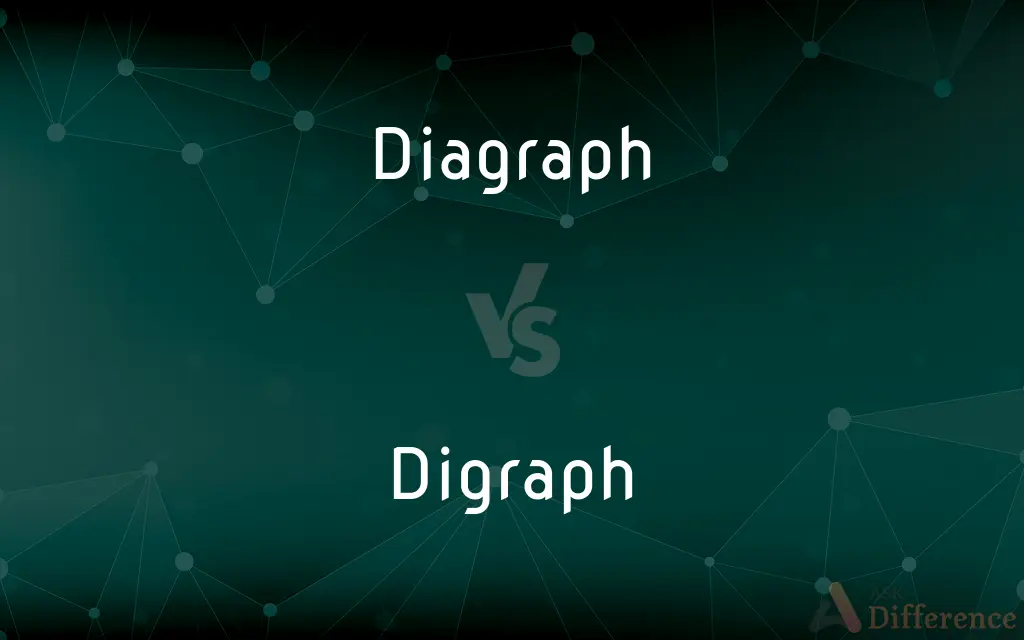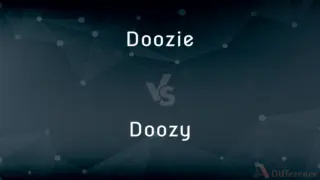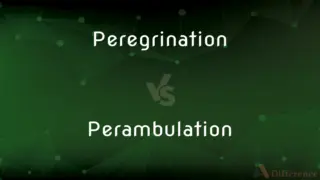Diagraph vs. Digraph — What's the Difference?
By Tayyaba Rehman — Updated on December 27, 2023
Diagraph' is a less common variant of 'digraph', a term in linguistics referring to a pair of letters representing a single sound. 'Digraph' is the widely accepted and standard term for this concept.

Difference Between Diagraph and Digraph
Table of Contents
ADVERTISEMENT
Key Differences
'Diagraph' is a term that occasionally appears in discussions about linguistics and phonetics but is less standard than 'digraph'. A 'digraph' refers to a pair of letters that together represent a single phoneme or distinct sound in a language.
The usage of 'diagraph' is not widely recognized in academic or educational texts, where 'digraph' is the preferred term. 'Digraphs' are important in understanding the phonetic structure of languages and in teaching reading and spelling.
Examples of 'diagraphs' are rare due to its less common usage, whereas examples of 'digraphs' are abundant in many languages. For instance, 'ch' in 'chair' and 'sh' in 'ship' are English digraphs.
In teaching and linguistic studies, the term 'digraph' is more frequently encountered and taught, reinforcing its standardization in the field. The term 'diagraph' may be seen as an alternate spelling or a less accurate term.
Overall, while 'diagraph' and 'digraph' technically refer to the same concept, the latter is the correct and widely accepted term in the context of language and phonetics.
ADVERTISEMENT
Comparison Chart
Definition
Less common variant of 'digraph'.
A pair of letters representing a single sound.
Usage
Rarely used and less recognized.
Widely accepted and used in linguistics.
Examples
Limited due to infrequent use.
Common, e.g., 'th', 'ch', 'ph'.
Recognition
Not standard in academic or educational texts.
Standard term in academic and educational contexts.
Context
May appear in informal discussions.
Used in formal linguistic and phonetic studies.
Compare with Definitions
Diagraph
A pair of letters representing one sound.
In some texts, 'diagraph' is used to mean 'digraph'.
Digraph
In linguistics, a unit of two letters expressing one sound.
The English digraph 'th' appears in 'think' and 'that'.
Digraph
Two letters that together represent a single sound.
The digraph 'ch' is used in the word 'church'.
Digraph
A combination of two letters producing one phoneme.
In 'phone', 'ph' is a digraph representing the 'f' sound.
Digraph
A dual-letter construct in alphabetic languages for a specific phoneme.
'Ck' in 'duck' functions as a digraph.
Digraph
A combination of two letters representing one sound, as in ph and ey.
Digraph
A pair of letters representing a single speech sound, such as the ph in pheasant or the ea in beat.
Digraph
A single character consisting of two letters run together and representing a single sound, such as Old English æ.
Digraph
(graph theory) A directed graph.
Digraph
(computing) A two-character sequence used to enter a single conceptual character.
Digraph
(linguistics) A pair of letters, especially a pair representing a single phoneme.
Digraph
Two signs or characters combined to express a single articulated sound; as ea in head, or th in bath.
Digraph
Two successive letters (especially two letters used to represent a single sound: `sh' in `shoe')
Digraph
A pair of characters used in writing to represent a single sound distinctly.
'Sh' in 'ship' is an example of a digraph.
Common Curiosities
Can you give an example of a digraph?
An example of a digraph is 'ch' in the word 'chocolate'.
Are digraphs important in language learning?
Yes, digraphs are important for understanding phonetics and spelling in language learning.
What is a digraph?
A digraph is a pair of letters that represent a single sound in a language.
Do all languages use digraphs?
Many, but not all, languages use digraphs as part of their writing systems.
What role do digraphs play in phonetics?
Digraphs help represent specific sounds that are not easily conveyed by single letters.
What's an example of a vowel digraph?
An example of a vowel digraph is 'ai' in 'rain'.
Why is 'digraph' preferred over 'diagraph'?
'Digraph' is the standard term in linguistics and widely recognized in academic contexts.
Is 'diagraph' a commonly used term?
'Diagraph' is a less common and non-standard variant of 'digraph'.
How does a digraph differ from a blend?
A digraph represents one sound, while a blend is a combination of letters where each retains its own sound.
Do digraphs only consist of consonants?
No, digraphs can consist of vowel pairs as well, like 'ea' in 'team'.
How do digraphs affect pronunciation?
Digraphs can change the pronunciation of a word, often creating a sound distinct from the individual letters.
Are digraphs taught in early reading education?
Yes, digraphs are commonly taught in early reading education to aid in phonetic understanding and spelling.
Are 'th' and 'sh' examples of digraphs?
Yes, 'th' in 'that' and 'sh' in 'ship' are examples of digraphs.
Is 'diagraph' used in formal educational materials?
'Diagraph' is rarely used in formal educational materials; 'digraph' is the correct term.
Can digraphs be found at the beginning of words?
Yes, digraphs can occur at the beginning, middle, or end of words.
Share Your Discovery

Previous Comparison
Doozie vs. Doozy
Next Comparison
Peregrination vs. PerambulationAuthor Spotlight
Written by
Tayyaba RehmanTayyaba Rehman is a distinguished writer, currently serving as a primary contributor to askdifference.com. As a researcher in semantics and etymology, Tayyaba's passion for the complexity of languages and their distinctions has found a perfect home on the platform. Tayyaba delves into the intricacies of language, distinguishing between commonly confused words and phrases, thereby providing clarity for readers worldwide.















































